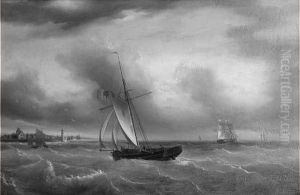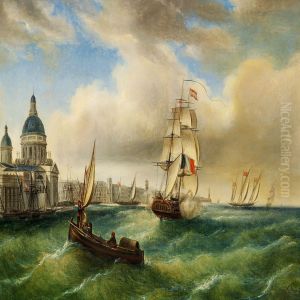Louis Burgade Paintings
Louis Burgade was a French artist born in 1860, whose work spanned from the late 19th century into the early 20th century, a period marked by significant transformations in the art world. Despite not being as widely recognized as some of his contemporaries, Burgade's contributions to art, particularly in the realms of painting and illustration, offer a unique perspective on the cultural and social dynamics of his time. His body of work reflects the broader movements of his era, including elements of Realism, Impressionism, and the early inklings of Modernism, though he developed a distinctive style that set his work apart.
Burgade's artistic journey began in his native France, where he was immersed in an environment rich with artistic innovation and heritage. He honed his skills at a time when the art world was experiencing tumultuous change, with artists pushing the boundaries of traditional techniques and subjects. While specifics about his education and early career are less documented than those of his more famous peers, it is known that Burgade dedicated himself to capturing the essence of his surroundings, focusing on landscapes, portraits, and daily life, imbuing his works with a sense of immediacy and intimacy.
Throughout his career, Louis Burgade exhibited his works in various salons and galleries, contributing to the vibrant art scene of France. His approach to color and light, alongside his ability to capture the subtleties of human emotion and the nuances of the natural world, garnered him respect among his peers. However, the advent of World War I and the subsequent shifts in the art market and societal values affected Burgade's visibility and the reception of his work.
After the war, as the art community gravitated towards newer movements like Cubism and Surrealism, Burgade's more traditional style fell out of the mainstream focus. Despite this, he continued to work and evolve his style, remaining true to his artistic vision until his death in 1944. Today, Louis Burgade's contributions are acknowledged as part of the rich tapestry of French art history, offering insights into the transitions and continuities within the art world of his time. His works, while not as prominently featured in major museums, are sought after by collectors and appreciated by connoisseurs for their historical value and aesthetic beauty.


